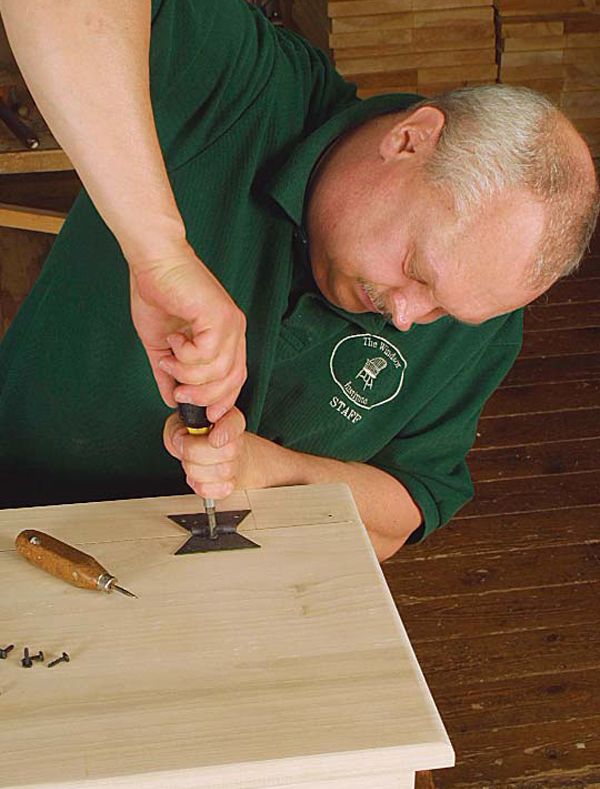All About Installing Hardware

Installing hardware on handmade furniture is like putting icing on a cake. It takes care and a steady hand to achieve good results, and the slightest slip-up shows. Here are a few things to consider:
The Basics:
• Be true to a style: Make sure the hardware you use is consistent with the style of your project.
• Choose high-quality hardware: Your projects will always benefit from well-made parts.
• Don’t be afraid to make your own: Many store-bought components can be created in the shop.
Be true to a style
Drawer handles in the Hepplewhite style will not look good on an Arts and Crafts-style furniture piece. Choose hardware that flatters the style of construction. Even custom-designed furniture should follow some standard design principles when it comes to hardware. This is especially important in light of the wide array of hardware available from online and catalog retailers. The dizzying number of options can lead any woodworker to a rash decision. When in doubt, stick with the standard options for the style of work you’re creating.
Choose high-quality hardware
Make sure the hardware you install is prepared to carry the load required. A drawer with low-grade slides likely will not run smoothly for long, and a door with low-quality hinges eventually will sag. Often, opting for the higher-priced hardware is the right thing to do.
Don’t be afraid to make your own
A custom-designed piece of furniture will benefit from custom-designed hardware. Door and drawer pulls are usually the easiest to create in your shop; they can be made from cut-offs of lumber used to build a project. Making your own pulls will allow you to proportion them to the piece. Wood hinges and drawer slides involve a bit more work, but can be just as rewarding when made by hand.
Fine Woodworking Recommended Products

Estwing Dead-Blow Mallet

Festool DF 500 Q-Set Domino Joiner

Starrett 12-in. combination square






















Log in or create an account to post a comment.
Sign up Log in